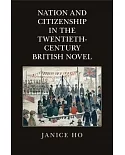Autobiography in France has taken a decidedly visual turn in recent years: photographs, shown or withheld, become evidence of what was, might have been, or cannot be said; photographers,
filmmakers, and cartoonists undertake projects that explore issues of identity. Textual and Visual Selves investigates, from a variety of theoretical perspectives, the ways in which
the textual and the visual combine in certain French works to reconfigure ideas—and images—of self-representation.
Surprisingly, what these accounts reveal is that photography or film does not necessarily serve to shore up the referentiality of the autobiographical account: on the contrary, the inclusion
of visual material can even increase indeterminacy and ambiguity. Far from offering documentary evidence of an extratextual self coincident with the “I” of the text, these images testify only
to absence, loss, evasiveness, and the desire to avoid objectification. However, where Roland Barthes famously saw the photograph as a prefiguration of death, in this volume we see how the
textual strategies deployed by these writers and artists result in work that is ultimately life-affirming.





















